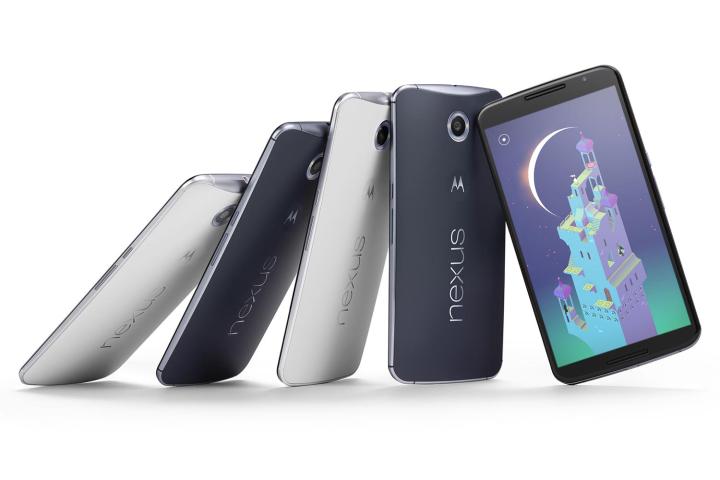
No, and there are several very good reasons why not.
The first is a whole world of choices. When you picked up the Nexus 5, there really weren’t many other devices that boasted the same specs for such a great price. Today, for between $650 and $700, there’s an amazing, wonderful, almost bewildering smorgasbord of options. From the closely related 2014 Moto X and the LG G3 to the Galaxy Note 4 and the HTC One M8, almost every top-of-the-range Android smartphone is now an option. You could even shun Android completely and go for the notoriously overpriced iPhone 6, which is still a bit cheaper than the new Nexus.
Sold out, or selling out?
What the hell happened, Google? What’s with the greed? According to Google product manager Sandeep Waraich, the Nexus 6 is a “deliberate decision to push the boundaries on technology. We arrived at the solution, then the price.”
Another expensive smartphone designed to slowly empty our bank accounts.
Putting it up for sale inside Google Play was a token gesture. The company kept the pre-orders quiet, not even tweeting it out from the official Nexus account until 10am on October 30, by which time the virtual shelves were empty. For the phone to disappear so fast suggests the initial stock was relatively small. Google also delayed pre-orders in the U.K. and Europe until mid-November, and there’s no information on when pre-orders will re-open in America.
In bed with the networks
Where are all the Nexus 6 phones? Why, on their way to all five major U.S. wireless carriers, where they’ll be sold for $200 up front, along with a lucrative two-year contract. It’s a first for a Nexus device, and a complete about-turn for Google. The first Nexus phone was designed to shake up dependency on networks and stop us being sucked into an expensive, long-term contract.

The Nexus 6 will end up primarily being sold on-contract, and presumably locked to one network. In an interview, Google VP for Android Engineering Hiroshi Lockheimer said “We are selling the Nexus 6 in a way most people are used to buying a phone.” Yes, but what happened to networks not supporting certain apps (Google Wallet, for example), or being slow to update software? Weren’t these unpopular tactics a driving force behind making the Nexus range different?
The second reason not to be so desperate to acquire the Nexus 6 is it’s turning out to be another expensive smartphone designed to slowly empty our bank accounts.
High prices take precedence over value
The latter half of 2014 is being defined by companies offering us over-priced hardware, in the misguided belief that we’re only interested in the latest shiny thing, rather than actual value. Apple barely breathed upon iPad Air 2, and the iPad Mini 3 is a prime example as well. Shrewd buyers will opt for last year’s models, and save themselves some cash.
You don’t have to buy the Nexus 6 to try out the latest version of Android at all.
You’d think Google would have been paying attention to all this. Well, in a way, it has.
“I wouldn’t draw any conclusions from what we’re doing this year,” said Google’s Android engineering VP, adding that “every year we do different things.” He appears to be saying that the change in strategy is some twisted experiment, presumably to see if we’re dumb enough to be lured back to the networks, just because of the misleadingly low entry price.
Don’t be Google’s guinea pig
Luckily, we don’t have to play along, which leads us neatly to reason three. Although it’s a technically impressive phone, those who rush out to buy the Nexus 6 really want to get Android 5.0 Lollipop. The thing is, you don’t have to buy the Nexus 6 to try out the latest version of Android at all. It’s possible to do so for half the price. Right now, you can buy the Nexus 5 for $350, and it’ll receive the exact same version of Android that runs on the Nexus 6, probably on the same day the new phone ships out.
And so I challenge all of you, true tech fans: Prove to Google that we can see past the Nexus 6’s tempting $200 price tag in AT&T’s window. Buy an unlocked Nexus 5 instead, enjoy Android 5.0, and see what happens next year. Google may be running an experiment, but that doesn’t mean we have to be its guinea pig.

